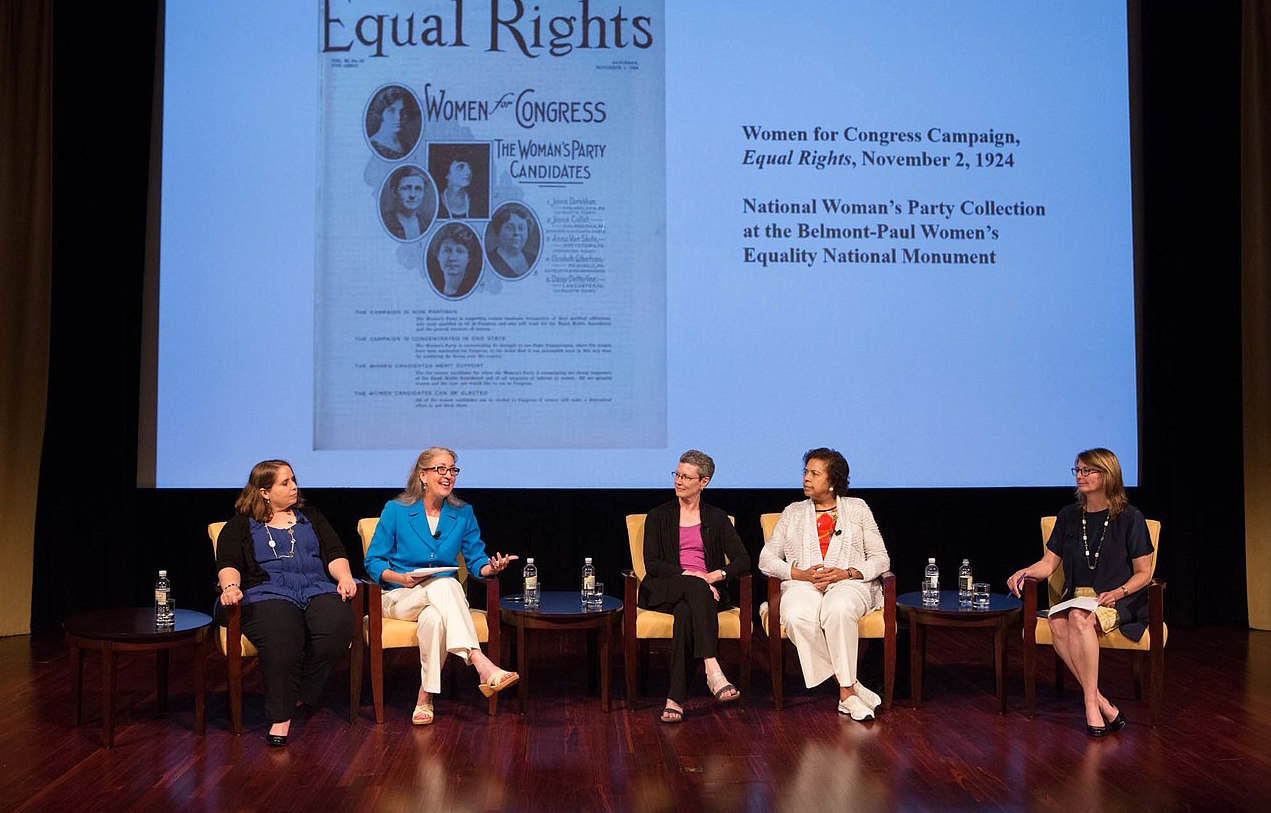“We hold these truths to be self-evident, that all men are created equal,” the Founding Fathers stated in the Declaration of Independence in 1776. Of course, they didn’t really mean “all men,” excluding slaves and Indigenous Native Americans. And they certainly didn’t include women. The U.S. Constitution that followed a dozen years later maintained the inequality. Over the intervening 240 years, this governing document, the oldest written constitution in the world still in use, has been amended many times — but never to extend the guarantee of equality to women. The Equal Rights Amendment, or ERA, first introduced in 1923, seeks to correct that, and may now, nearly a century later, be close to passage. As with all significant progressive advances achieved over the history of this country, grassroots organizing has brought the ERA this far. Whether it gets passed and included as the 28th Amendment depends on the strength of the intersectional movements demanding equality for women.
“Why didn’t women achieve full constitutional equality in 1787 or 1982? Because the country wasn’t ready?” actor Patricia Arquette asked last week at a congressional House Judiciary Subcommittee hearing on the ERA. It was the first such hearing in almost four decades. “Well, I hope you’re ready now! Because women have been waiting 232 years for equality in this country, and it has failed them. Legislators have blocked the passage of the Equal Rights Amendment for decades. But we’re done waiting.”
California Democratic Congressmember Jackie Speier is leading the renewed push to pass the ERA. She is the sponsor of House Joint Resolution 38, which legislatively strips away an arbitrary deadline for ratification of the ERA, established in 1972, requiring ratification within 10 years. After the deadline passed in 1982, and under assault by the Reagan administration, efforts to approve the ERA faded. “We need the ERA so that we can join the rest of the industrialized countries in the world,” Speier said at the hearing, “so that we can achieve our full economic and social potential. We will no longer allow ourselves to be an afterthought. We need the ERA now.”
The Equal Rights Amendment states: “Women shall have equal rights in the United States and every place subject to its jurisdiction. Equality of rights under the law shall not be denied or abridged by the United States or by any State on account of sex.” This language was passed by Congress in 1972, then sent to the states for ratification. Thirty states ratified quickly, out of the 38 needed. Several more states joined in during the ’70s. Nevada ratified the ERA in 2017, and Illinois did the same in 2018 — bringing the total to 37 states.
If one more state legislature votes to ratify the Equal Rights Amendment, and if Speier’s resolution passes removing the old ratification deadline, the ERA will become the 28th Amendment to the Constitution.
Kathleen Sullivan, former dean of the Stanford University Law School, also spoke at the congressional hearing. She said that the U.S. Constitution is “the only major written constitution in the world that lacks a provision declaring that men and women are equal.” She elaborated:
“The French Constitution provides that the law guarantees to the women in all spheres rights equal to those of men. The German Constitution provides that men and women have equal rights, and that nobody shall be prejudiced or favored because of their sex. The Constitution of India provides that the state shall not discriminate against any citizen on grounds of sex. And every written constitution promulgated since World War II contains a sex equality provision.”
A poll recently released by the ERA Coalition/Fund for Women’s Equality found that 94 per cent of the American public supports a constitutional guarantee of equality for men and women — and that 80 per cent mistakenly thought it was already guaranteed. One reminder that it’s not is “Equal Pay Day,” which marks how far into a new year a woman has to work in order to earn what a man did in the previous year. For all U.S. women in 2019, the date was April 2. But women of colour have to work much longer; for Latinas, Equal Pay Day falls this year on Nov. 20 — almost a full year of work more to earn what a man earns in one year. Pay equity is just one problem that the ERA would help eliminate.
Generations of women and their allies have fought for the ERA, from the suffragists who won women the right to vote in 1920 to the feminists in the 1960s and 1970s. With more than 100 women elected to Congress for the first time in history, with millions coming out for the Women’s Marches from coast to coast, and with the powerful #MeToo movement focusing world attention on systemic sexual abuse, the time is long overdue to pass the Equal Rights Amendment.
Amy Goodman is the host of Democracy Now!, a daily international TV/radio news hour airing on more than 1,300 stations. She is the co-author, with Denis Moynihan, of The Silenced Majority, a New York Times bestseller. This column originally appeared on Truthdig.
Photo: Jeff Reed/U.S. National Archives/Wikimedia Commons
Help make rabble sustainable. Please consider supporting our work with a monthly donation. Support rabble.ca today for as little as $1 per month!




